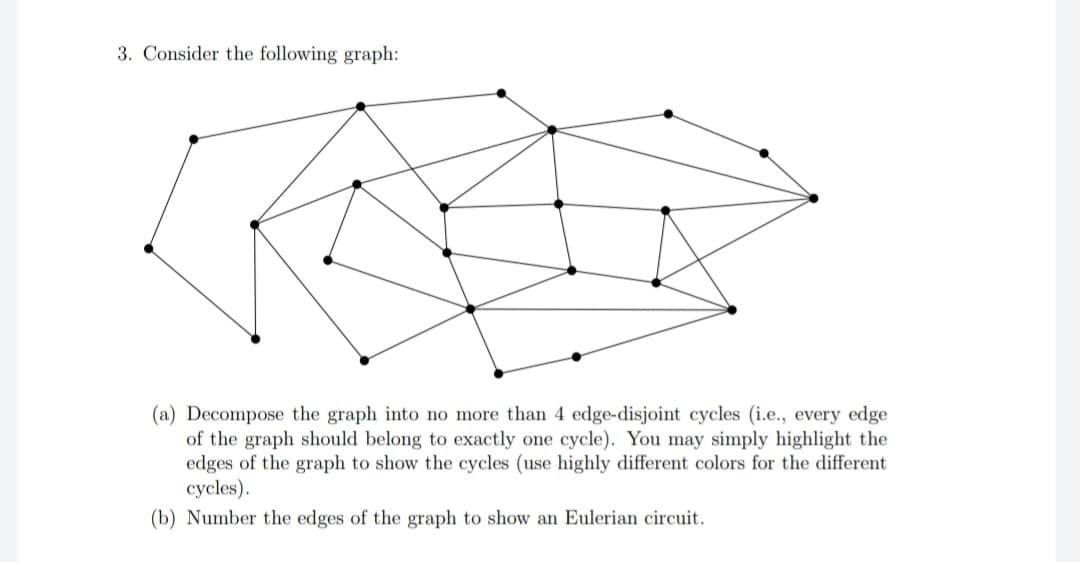3. Consider the following graph: (a) Decompose the graph into no more than 4 edge-disjoint cycles (i.e., every edge of the graph should belong to exactly one cycle). You may simply highlight the edges of the graph to show the cycles (use highly different colors for the different cycles). (b) Number the edges of the graph to show an Eulerian circuit.
3. Consider the following graph: (a) Decompose the graph into no more than 4 edge-disjoint cycles (i.e., every edge of the graph should belong to exactly one cycle). You may simply highlight the edges of the graph to show the cycles (use highly different colors for the different cycles). (b) Number the edges of the graph to show an Eulerian circuit.
Linear Algebra: A Modern Introduction
4th Edition
ISBN:9781285463247
Author:David Poole
Publisher:David Poole
Chapter3: Matrices
Section3.7: Applications
Problem 80EQ
Related questions
Question
Needed to be solved a and B part's Correctly in 1 hour and get the thumbs up please show neat and clean work for it

Transcribed Image Text:3. Consider the following graph:
(a) Decompose the graph into no more than 4 edge-disjoint cycles (i.e., every edge
of the graph should belong to exactly one cycle). You may simply highlight the
edges of the graph to show the cycles (use highly differen colors for the different
cycles).
(b) Number the edges of the graph to show an Eulerian circuit.
Expert Solution
This question has been solved!
Explore an expertly crafted, step-by-step solution for a thorough understanding of key concepts.
Step by step
Solved in 2 steps with 2 images

Recommended textbooks for you

Linear Algebra: A Modern Introduction
Algebra
ISBN:
9781285463247
Author:
David Poole
Publisher:
Cengage Learning

Linear Algebra: A Modern Introduction
Algebra
ISBN:
9781285463247
Author:
David Poole
Publisher:
Cengage Learning